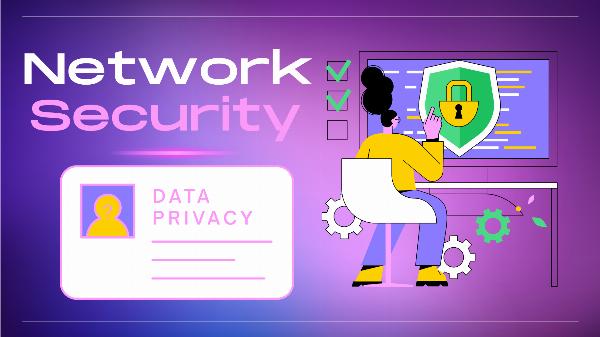The Importance of OTP Messages in Ensuring Security and Trust

In a world where online transactions and digital communication dominate, the humble One-Time Password (OTP) has become a linchpin for security and trust. From banking to e-commerce, OTPs are the digital guardians that protect your sensitive information and transactions. But how does it all work, and why is it so vital? Let’s dive in.
Understanding OTPs (One-Time Passwords)
What Is an OTP?
An OTP is a unique, temporary code sent to a user via SMS, email, or another medium. It acts as a second layer of authentication, verifying the identity of the user. Think of it as a digital lock that ensures only the right person gains access.
Why Are OTPs Crucial for Security?
Passwords can be guessed, stolen, or compromised. OTPs, however, are dynamic—they change every time you log in or complete a transaction. This makes them a powerful tool against fraud.
OTPs and Their Role in Everyday Transactions
Whether you're transferring money, booking tickets, or confirming a delivery, OTPs play a critical role in ensuring these processes are secure and seamless.
Common Use Cases of OTP Messages
Online Banking and Money Transfers
Banks rely on OTPs to authorize fund transfers, adding a layer of security against unauthorized access.
E-commerce Transactions
From verifying payment details to confirming orders, OTPs ensure safe and smooth online shopping experiences.
Securing Government Portals
Many government services use OTPs for logging in, ensuring that sensitive data remains protected.
Ride-Hailing Apps and Delivery Services
Want to confirm your ride or delivery? OTPs verify that you’re the rightful recipient.
Delivery Channels for OTP Messages
SMS as the Primary Channel
SMS remains the most reliable channel, offering near-instant delivery. However, its dependency on network availability can be a limitation.
Email: The Backup Option
Email serves as a backup, especially for users traveling internationally or without mobile network access.
WhatsApp and Other Messaging Platforms
Platforms like WhatsApp are becoming popular for OTP delivery due to their wide adoption and ease of use.
Push Notifications for Seamless Integration
Push notifications work well for apps, ensuring a unified user experience through robust notification infrastructure.
Challenges in OTP Message Delivery
Ensuring 100% Deliverability
Every OTP must reach its intended recipient. Any failure can lead to user frustration and potential revenue loss.
Real-Time Delivery Expectations
Users expect OTPs to arrive instantly. Delays can disrupt transactions and erode trust.
Failures and Recovery Mechanisms
Fallback options, like retry mechanisms, are crucial to overcoming delivery failures.
Building a Robust OTP Delivery System
Key Factors for Reliable Delivery
Failover Protocols for Backup
If one delivery channel fails, the system should automatically switch to another, ensuring uninterrupted service.
Real-Time Observability of Metrics
Monitoring delivery rates and latency in real-time helps businesses identify and address issues proactively.
Scalability for Fluctuating Demand
An ideal system should handle high transaction volumes during peak times without breaking a sweat.
Advantages of a Multi-Channel OTP Delivery System
Enhancing Reliability
Multiple delivery channels ensure that users always receive their OTPs, regardless of network issues.
Improving Customer Experience
Quick and seamless OTP delivery enhances user satisfaction and loyalty.
Reducing Costs with Optimized Workflows
Intelligent routing can lower costs by choosing the most efficient delivery method, leveraging a strong notification infrastructure.
Real-World Examples of OTP Usage
E-commerce Success Stories
Top e-commerce platforms report reduced fraud and cart abandonment with OTP-based authentication.
Banking Fraud Prevention
Banks using OTPs have significantly lowered unauthorized transactions and improved customer trust.
Future Trends in OTP Technology
Biometric and OTP Integration
Combining OTPs with biometric data could redefine authentication security.
AI-Powered Delivery Systems
AI can optimize delivery channels, reducing delays and improving efficiency.
The Role of Blockchain in OTP Security
Blockchain technology promises tamper-proof OTP systems, making them even more secure.
Conclusion
OTPs are the unsung heroes of digital security, ensuring safe and smooth online interactions. By leveraging advanced delivery systems and multi-channel approaches, businesses can provide a frictionless, secure experience to their users.
FAQs
1. What happens if I don’t receive an OTP message?
Check your network connection, request a resend, or try another delivery channel like email or WhatsApp.
2. Are OTPs completely secure?
While OTPs are highly secure, combining them with additional measures like biometrics increases safety.
3. Can OTPs be intercepted?
It’s rare but possible. Using secure channels and encryption minimizes this risk.
4. How do businesses ensure OTP delivery?
They use multi-channel systems, failover protocols, and real-time monitoring for reliability.
5. What’s the difference between SMS OTP and Email OTP?
SMS OTPs are faster but depend on network availability. Email OTPs serve as a reliable backup option.
Note: IndiBlogHub features both user-submitted and editorial content. We do not verify third-party contributions. Read our Disclaimer and Privacy Policyfor details.







